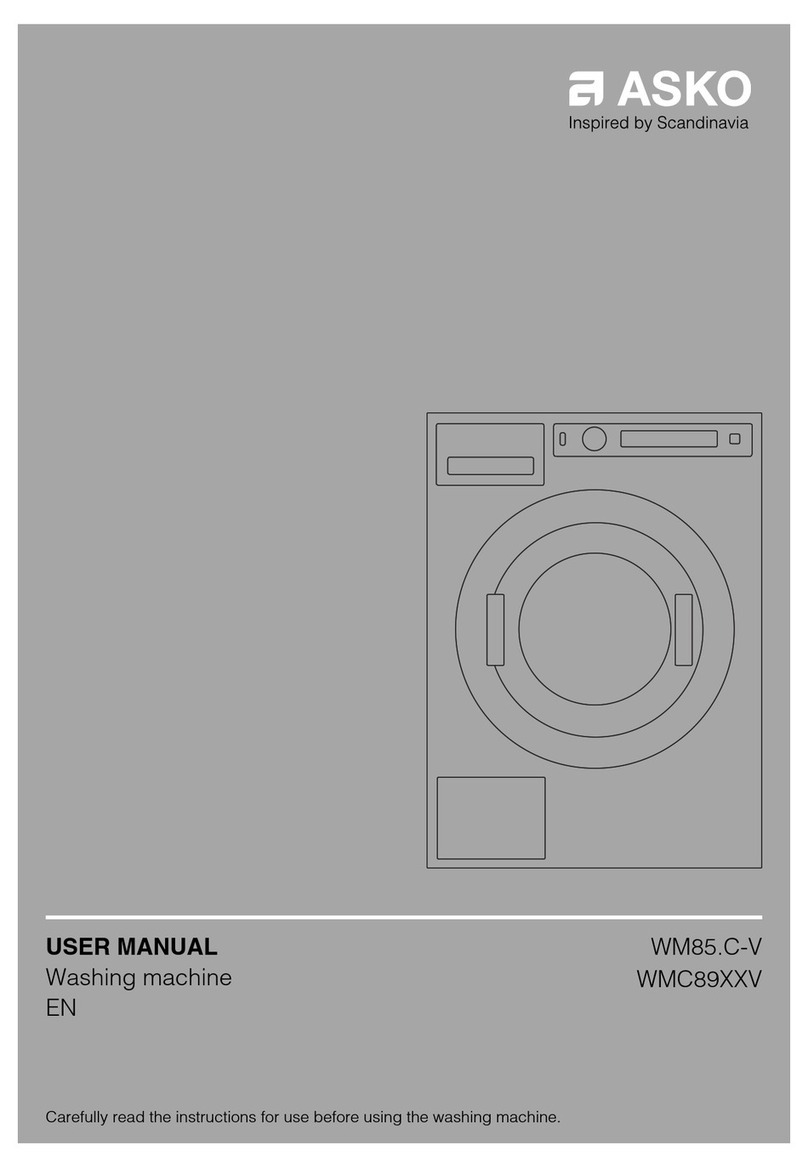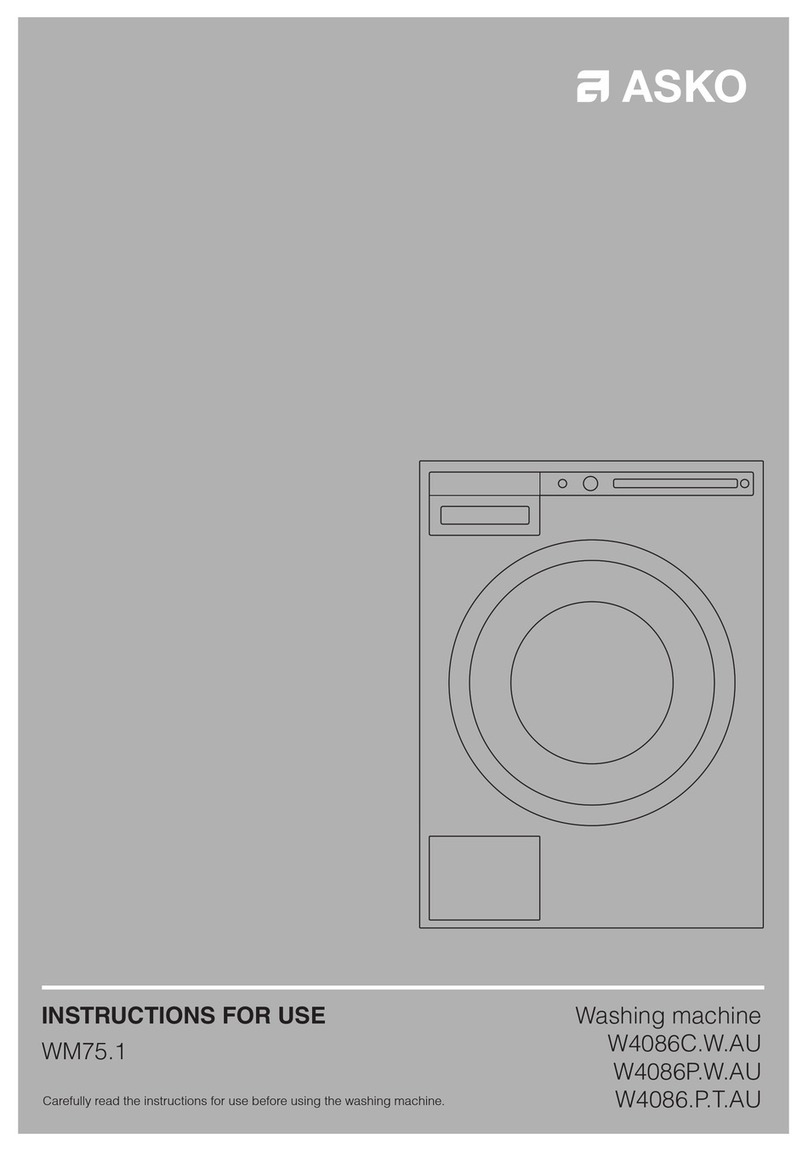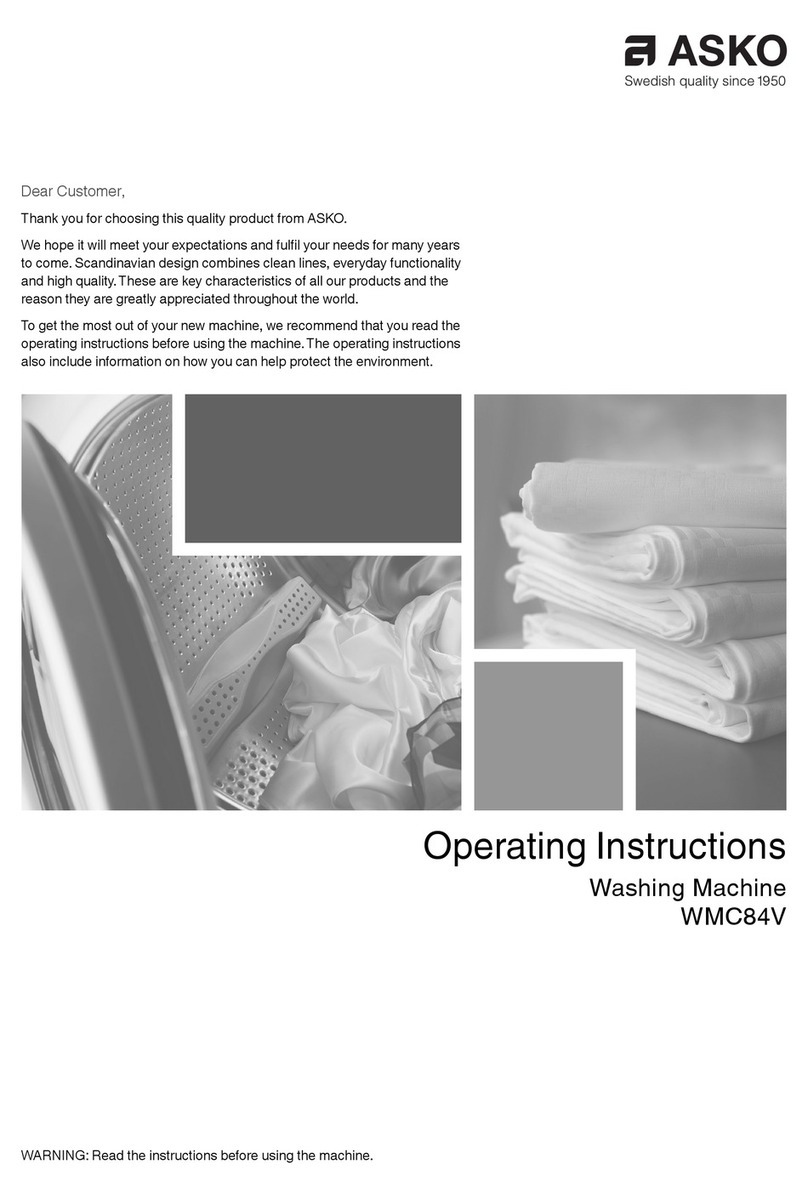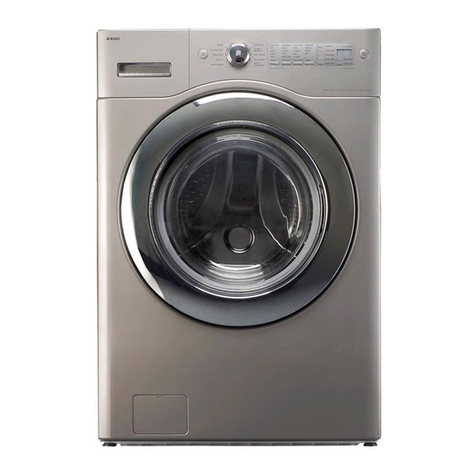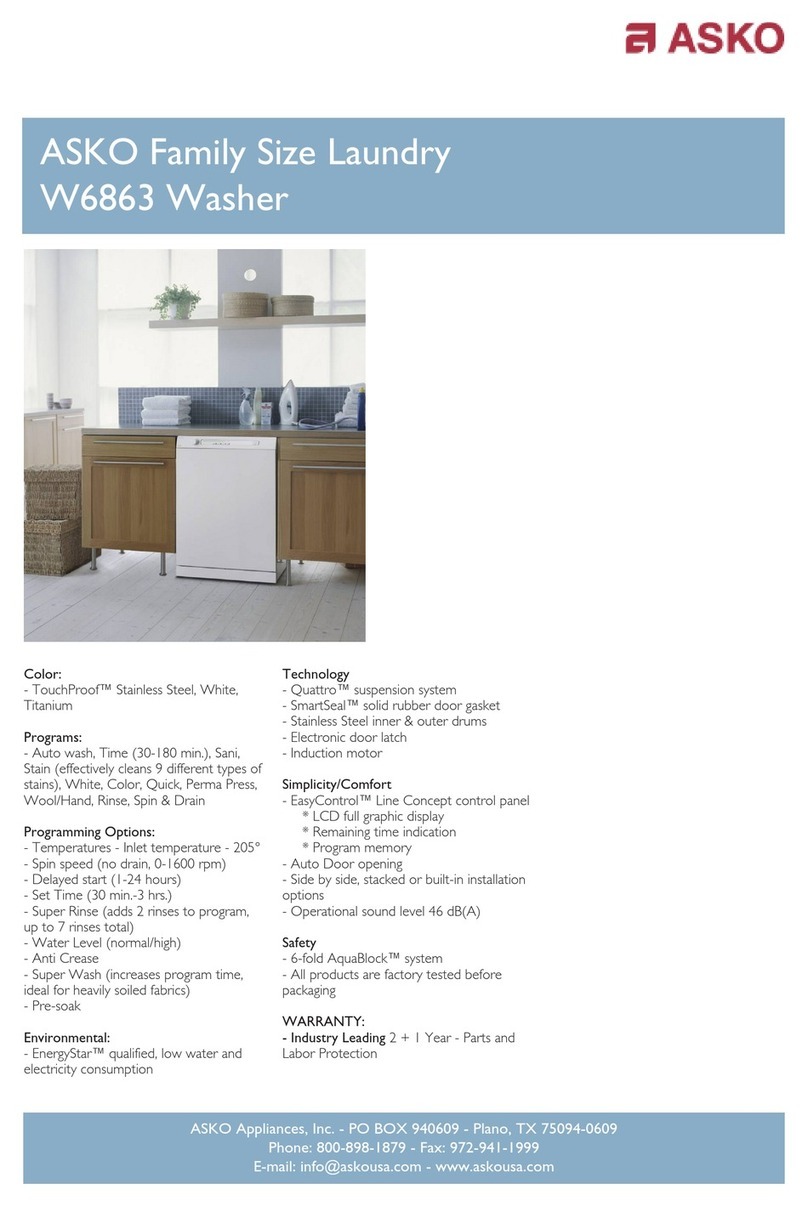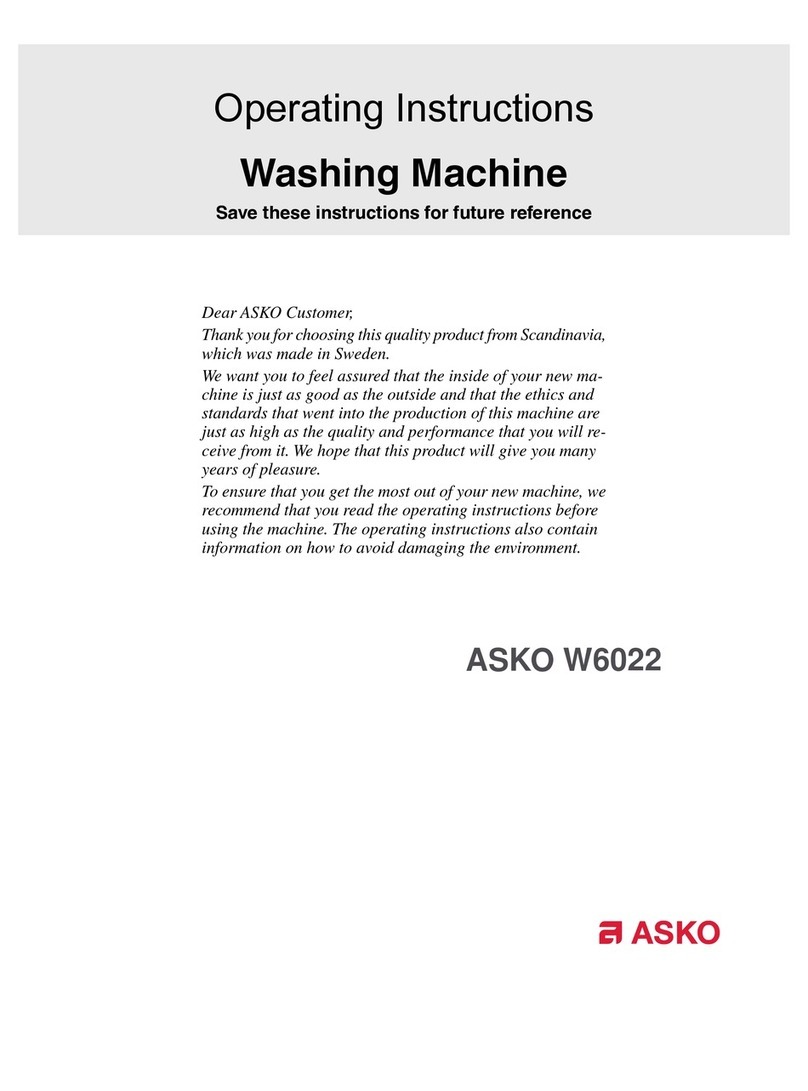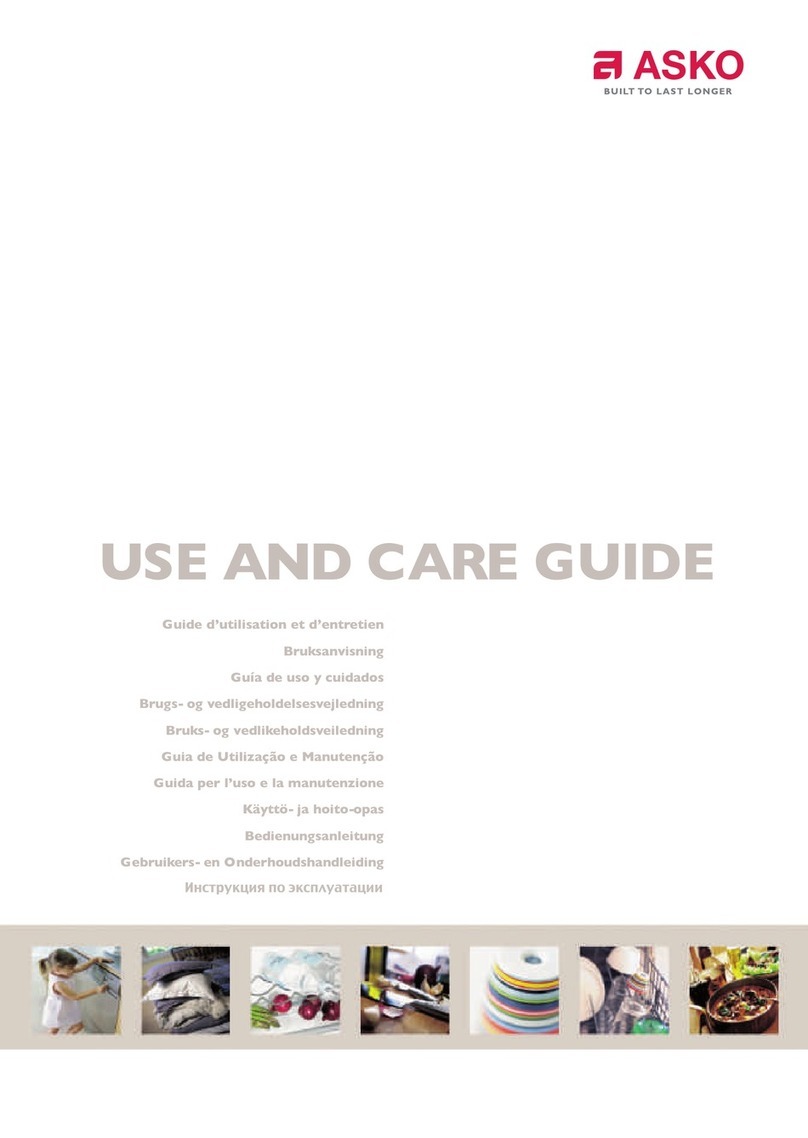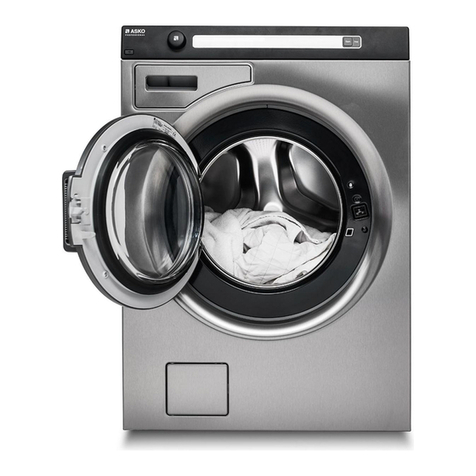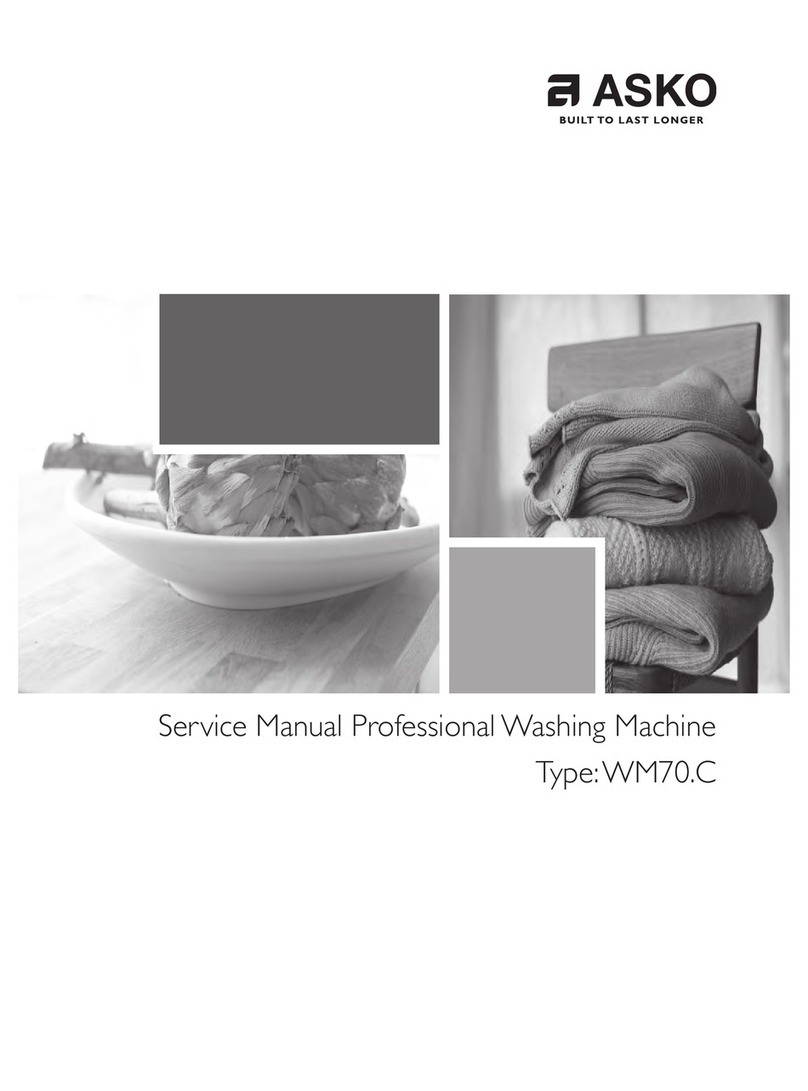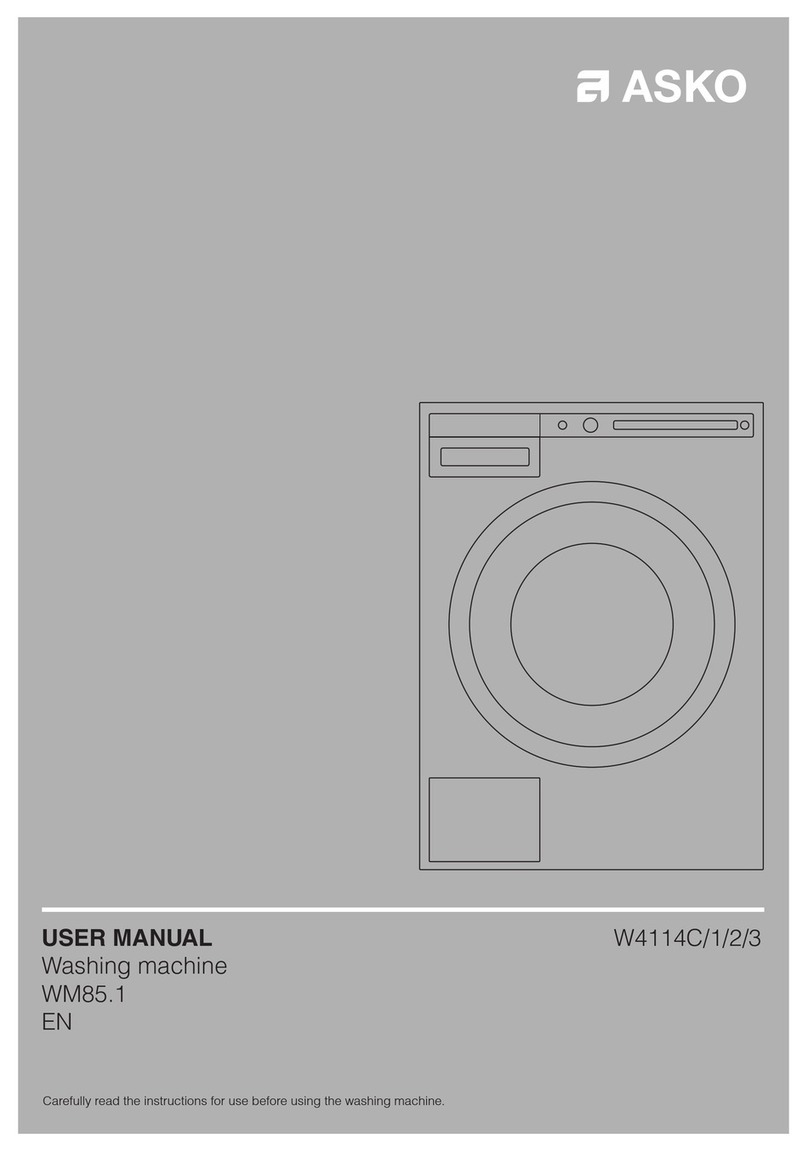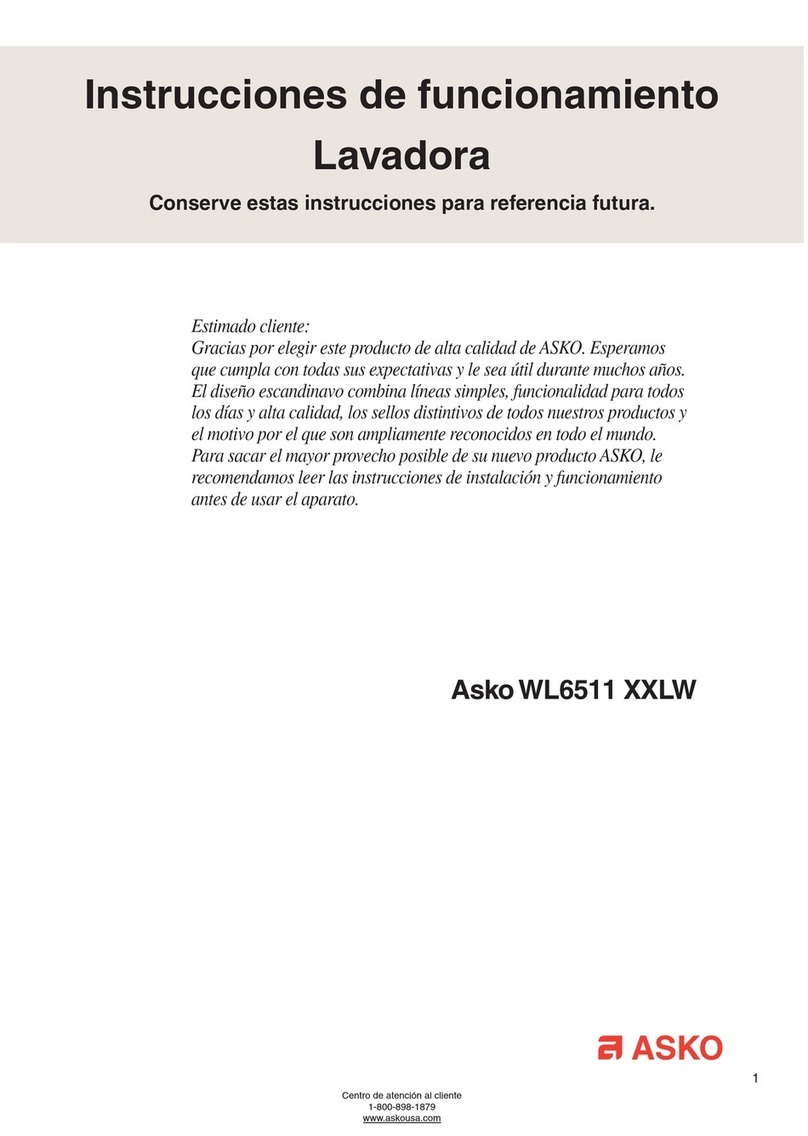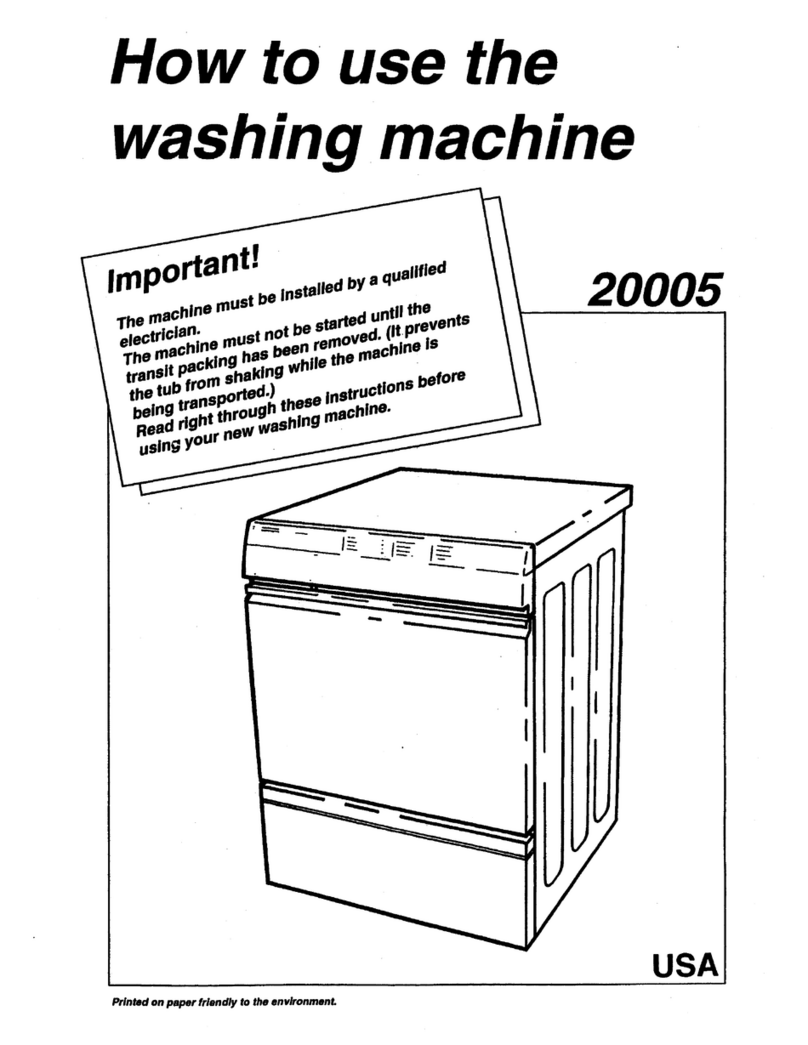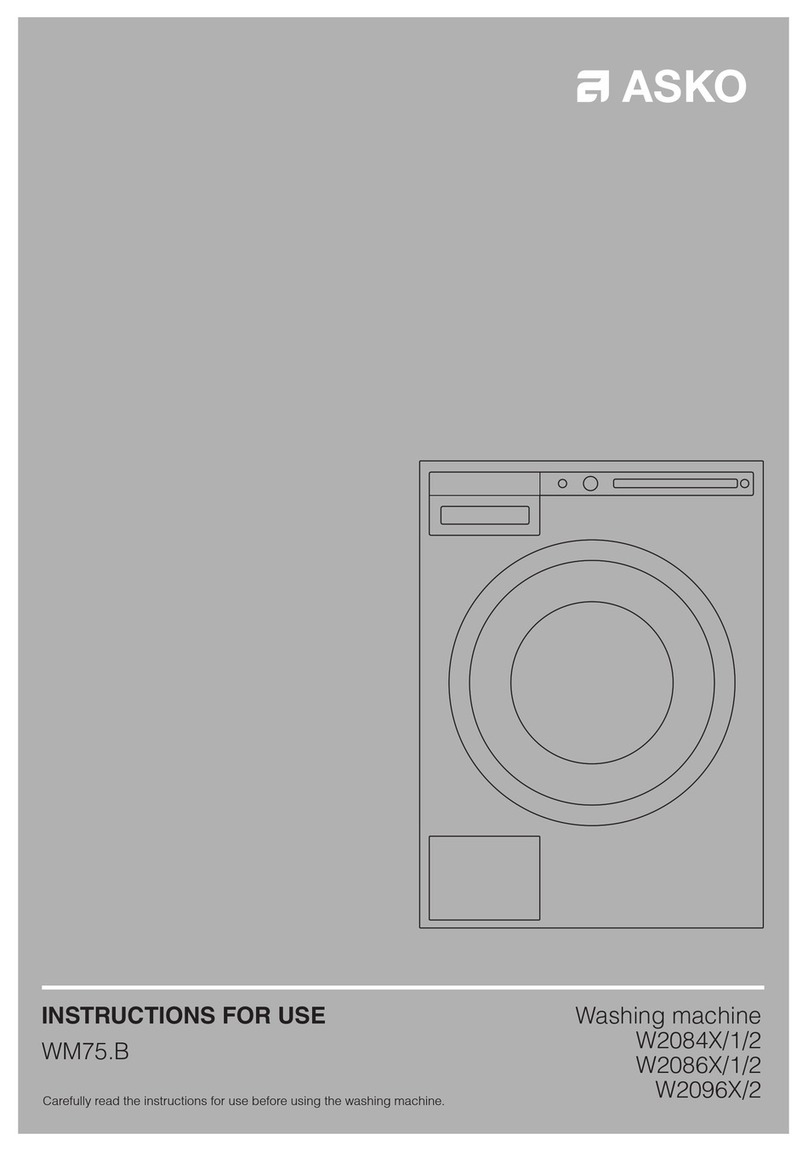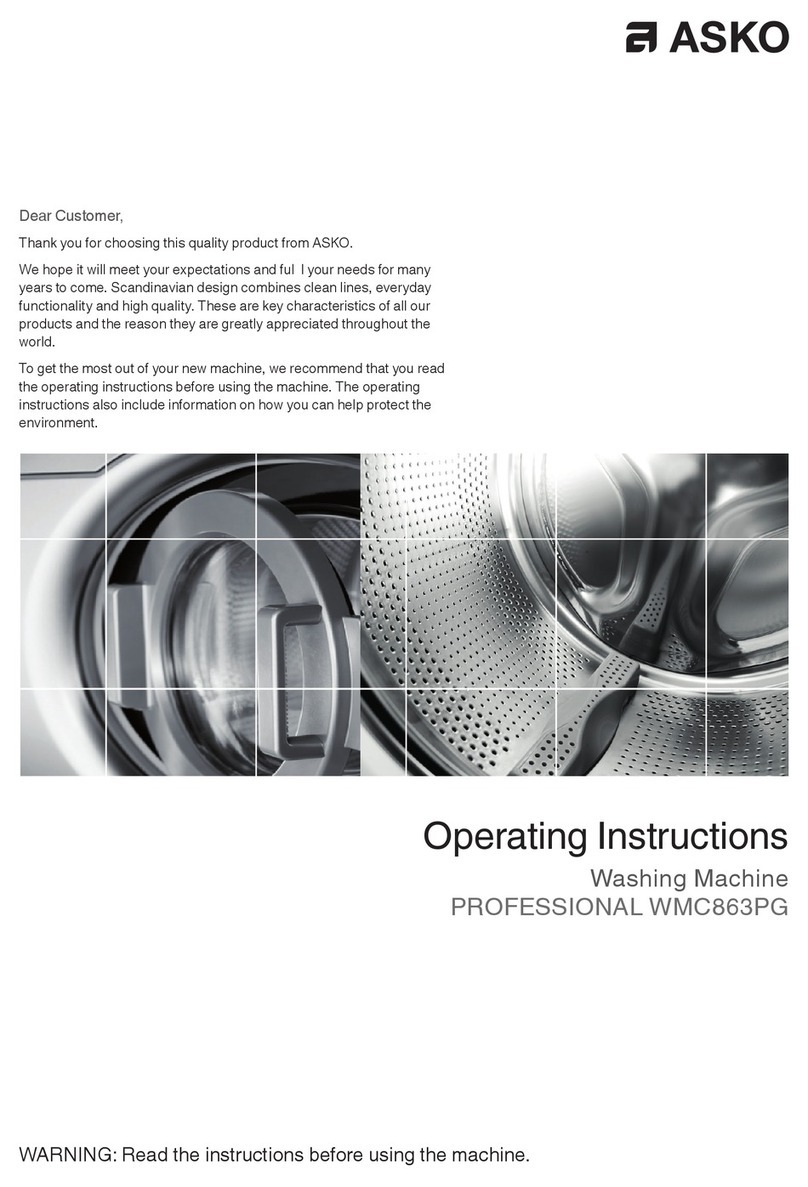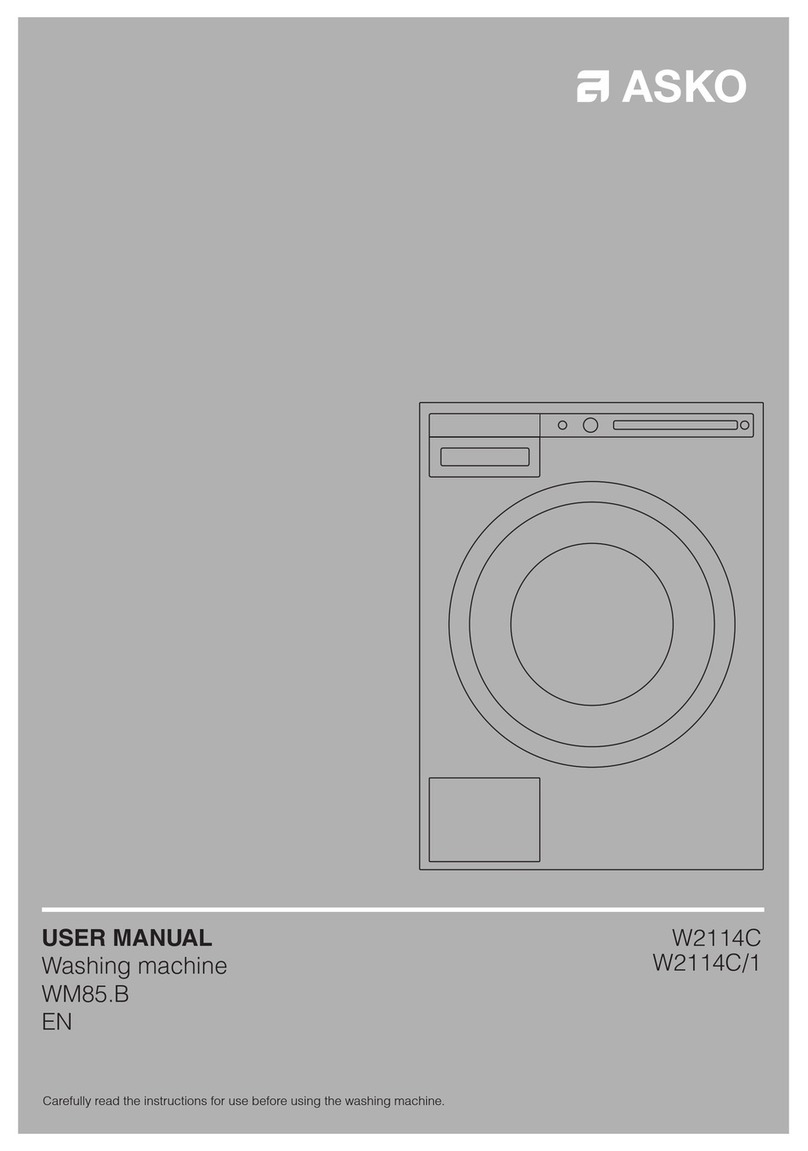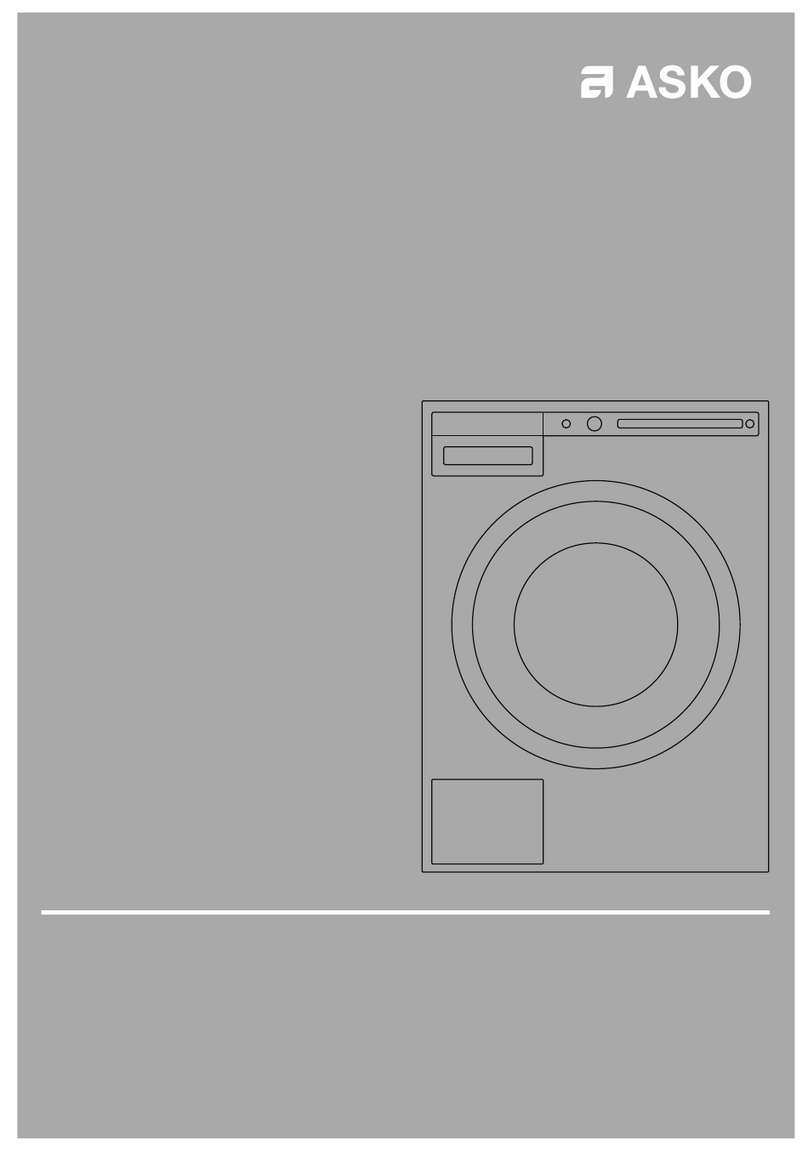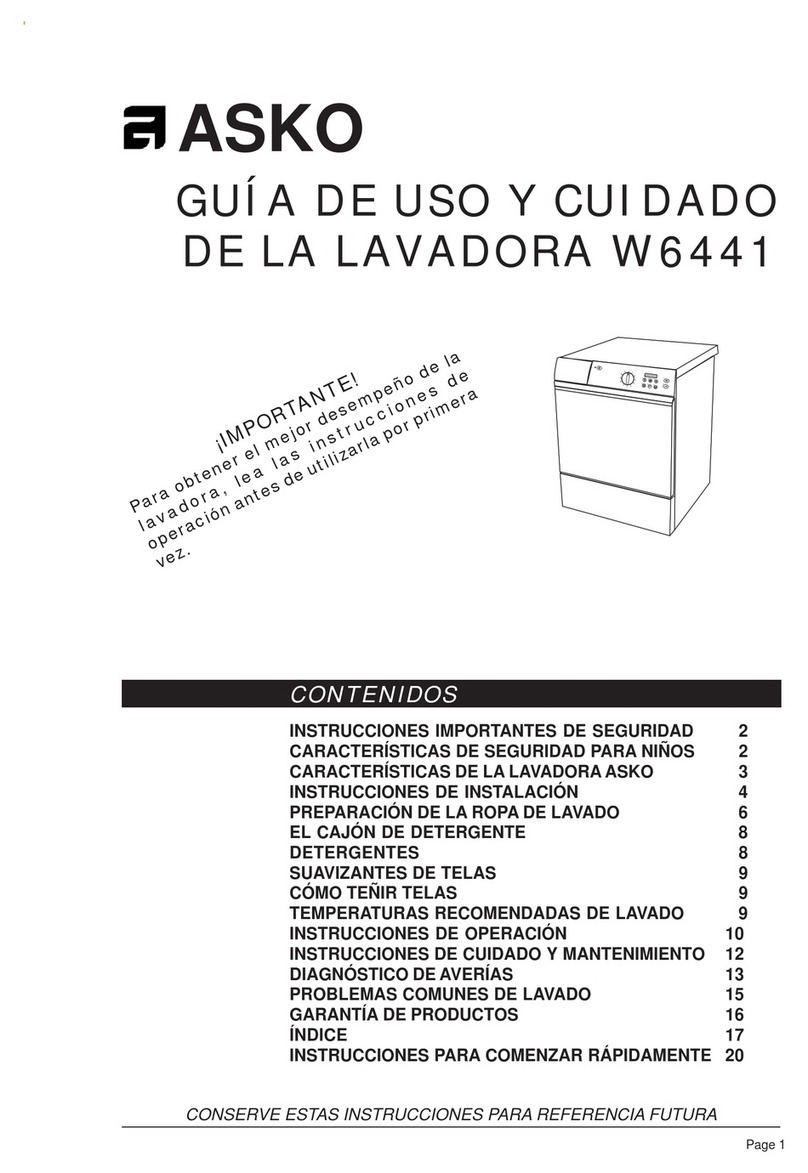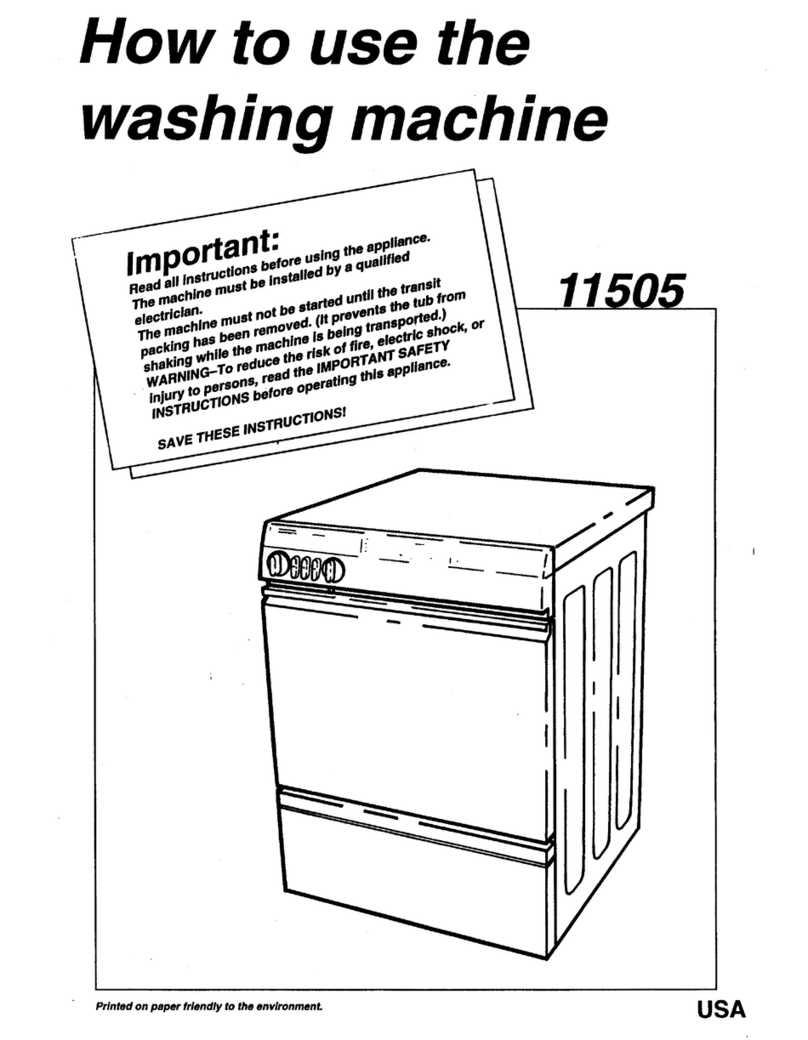
Contents
3Introduction .............................................................................................................................
4Safety precautions ..................................................................................................................
10Washing machine description ...............................................................................................
10..................................................................................................................................................
11Dispenser tray .........................................................................................................................
11..................................................................................................................................................
12Before using for the first time ................................................................................................
12..................................................................................................................................................
14Installation and connection ....................................................................................................
14..................................................................................................................................................
20Tips before washing ...............................................................................................................
20..................................................................................................................................................
23Washing process step by step (1-8) ......................................................................................
23..................................................................................................................................................
30Settings ....................................................................................................................................
30..................................................................................................................................................
33Cleaning and maintenance ....................................................................................................
33..................................................................................................................................................
36Errors –what to do? ...............................................................................................................
36..................................................................................................................................................
44Service .....................................................................................................................................
44Before calling a service technician ...........................................................................................
45Technical information .............................................................................................................
45Technical information ................................................................................................................
46Program chart .........................................................................................................................
46SC70 .........................................................................................................................................
47Adjustment of the displayed washing time ...............................................................................
49Removal ...................................................................................................................................
49Disposal / recycling of packaging .........................................................................................
50Quick guide ..............................................................................................................................
50..................................................................................................................................................
2
